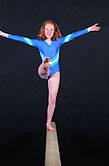
FRIDAY, April 9 (HealthDay News) — Nearly half of all sports injuries suffered by middle and high school-aged children are due to overuse — and many of those injuries could have been prevented.
That’s the message from the just-launched Stop Sports Injuries campaign, which is spearheaded by a coalition of doctors’ groups and elite athletes, including professional golf legend Jack Nicklaus; former Major League Baseball pitching great John Smoltz; and University of Oklahoma quarterback Sam Bradford, the 2009 Heisman Trophy winner.
“There are a lot of factors behind the increase in overuse injuries, but the number one thing is specialization. Kids are being forced to choose one sport and they’re playing it year-round,” said Dr. James Andrews, an orthopedic surgeon, president of the American Orthopaedic Society for Sports Medicine and co-chairman of the Stop Sports Injuries campaign.
“Sports used to be seasonal. If you played youth baseball, you used to have the winter off. Now, people think playing all year is supposed to make you better, but more isn’t always better,” Andrews said.
Smoltz, who’s now a TV sports broadcaster, agreed. “Growing up, I played all sports and loved every moment of it. I didn’t feel like I had to compete in such a magnified way to get recruited or looked at. If you asked every other major leaguer, and other professional athletes, very few would say that they played their sport year-round,” Smoltz said. “These kids need time to recover and play other sports,” he added.
According to the Stop Sports Injuries campaign, the sports with the highest risk of overuse injuries for children are: baseball, basketball, cheerleading, dancing, football, gymnastics, running, soccer, softball, swimming, tennis and volleyball.
The U.S. Centers for Disease Control and Prevention reports that high school athletes alone account for an estimated 2 million injuries, 500,000 doctor visits and 30,000 hospitalizations every year. And orthopedic surgeons are now seeing two trends: a rapid increase in the number of youth sports injuries and a drop in the age of young athletes with overuse injuries. According to the American Academy of Orthopaedic Surgeons, every year more than 3.5 million children age 14 and younger are treated for sports injuries, the campaign said.
Children and teens playing sports can sustain two types of injuries: acute injuries and overuse injuries, according to the campaign. Acute injuries are the more obvious injuries that occur from a single trauma, such as getting hit with a baseball or breaking a bone. Overuse injuries occur over time from repeating the same motion over and over again. Tennis elbow is an example of an overuse injury.
And, parents and coaches may not always realize that an overuse injury has occurred. Kids just want to keep playing and may not mention it. “Kids have no barometer for when they should stop. They’re just not able enough to listen to their bodies yet. They’d rather be out in the field playing,” Smoltz said.
Signs that parents should look for that might indicate an overuse injury include:
- Favoring one side of the body over the other.
- Appearing to be in pain when using a certain body part.
- Trouble sleeping.
- Headaches.
- Stiffness in muscles or joints.
“Parents need to get involved and to listen to their kids. They also need to be knowledgeable about their child’s sports and what the risks are,” advised Andrews. He said parents also need to realize that a minor injury when a child is young can lead to a major one as the child grows older. He said he’s seeing a lot of kids in his practice who have adult-type injuries, and are requiring extensive reconstructive surgeries before they’re even out of high school.
“Young kids are a lot more vulnerable because they have cartilage that’s soft, muscles that are weak and they’re still growing,” said Andrews, who noted that some parents also expect that if their child is injured, an orthopedic surgeon can fix the problem, whatever it is.
“Parents sometimes have unrealistic expectations that we can fix anything, but any injury carries the risk of late problems, like arthritis,” he said.
“We can’t prevent all injuries, but we’d like to do what we can to keep kids on the playing field and out of the operating room,” Andrews added.
“We have to reintroduce fun to sports. Seventy percent of kids are quitting sports by age 13, a lot of them from burnout. Kids should be having more fun, just going out and playing,” Smoltz said.
“If you’re talented and you just play, it’ll show,” he added. “You can practice, but this shouldn’t be a year-round job for kids.”
More information
For sport-specific injury prevention advice, visit StopSportsInjuries.org.

